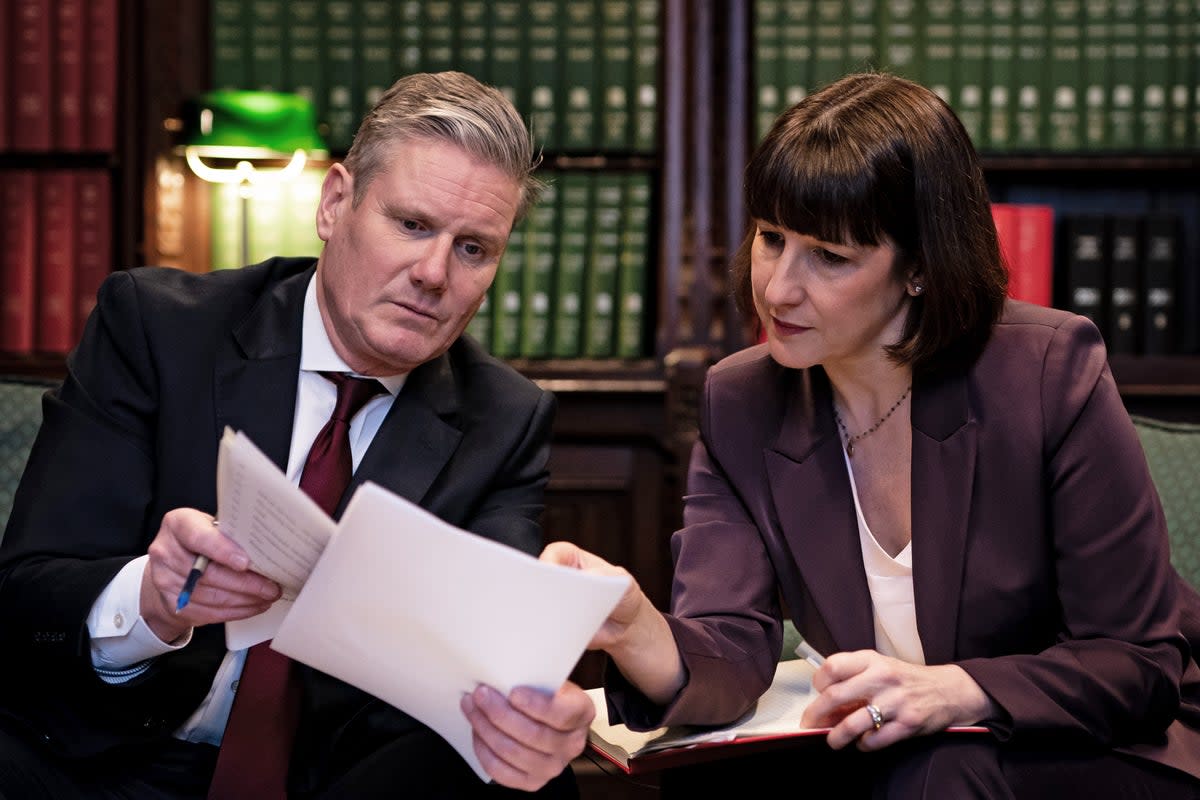Voices: Sunak’s impending defeat is not all down to the twin disasters of Boris and Truss…

The history books will doubtless record that Rishi Sunak was dealt such an impossible hand – after the lies and chaos under Boris Johnson and economic disaster under Liz Truss – that no Conservative leader could have avoided defeat at this year’s election.
But there is another version of events: that Sunak, and several of his predecessors as prime minister, were held back by a dysfunctional, outdated system at the centre of government created in the 19th century.
10 Downing Street has become an increasingly presidential operation which tries to impose its will on weak Whitehall departments and ministers, but becomes sucked into day-to-day firefighting and crisis management. No 10 is small by international standards, and a PM doesn’t have the support they need.
The Cabinet Office, which is supposed to support the PM and the cabinet, is ineffective and underpowered, leaving a vacuum filled by an all-powerful Treasury. The result is a lack of joined-up government on the big issues which need to be tackled across departments, and successive governments failing to deliver their strategic objectives and manifesto promises.
A good example: the Treasury fixed the budget for levelling up, so the policy had to fit within it, which is back to front. No wonder what could have been a game-changing Tory policy has failed.
The weakness at the heart of government was illustrated by the chaotic initial response to the pandemic, as the Covid inquiry has exposed. Dominic Cummings, Johnson’s most powerful aide, had many enemies in Whitehall, but many there agreed with his description of the Cabinet Office as a “bomb site” and “dumpster fire.”
Other symptoms of the malaise are a bunker mentality in No 10 and an unwieldy cabinet. Both apply under Sunak, who has 32 ministers at his cabinet table – 23 full members and nine allowed to attend. No way to run a company, let alone a government.
As Tory MPs agonise over whether Sunak should lead them into the election, there is growing criticism of his Downing Street operation – most recently, why it took 24 hours to condemn Tory donor Frank Hester’s indefensible alleged remarks about Diane Abbott as racist.
There are constant complaints about a lack of vision and direction. Some Tory MPs accuse Sunak of the “flip-flopping” charge he throws at Keir Starmer; they believe bringing back David Cameron but ploughing on with his flawed Rwanda scheme points in two different directions.
Sunak has rejected the idea of a smaller inner cabinet. But if Starmer wins the election, he rightly plans a shake-up and is studying closely a blueprint by the Institute for Government (IFG) think tank published this month. Its commission’s year-long inquiry interviewed 1,000 politicians, officials and advisers, and none defended the status quo.
It proposed an “executive cabinet committee” of a few key ministers; a first secretary of state would be responsible for delivering the government’s priorities and for the civil service; the Cabinet Office and No 10 would become a Department of the Prime Minister and Cabinet, with a separate Department for the Civil Service. Strategy, budget and performance management would be “owned collectively at the centre,” weakening the Treasury’s grip.
Starmer is considering plans for a "gang of four" or five senior ministers to drive through his five "missions". He would likely be joined by Angela Rayner, Rachel Reeves and Pat McFadden, his election campaign co-ordinator. Labour insiders won’t admit it publicly, but believe "the quad" under the coalition (David Cameron, George Osborne and Nick Clegg and Danny Alexander from the Liberal Democrats) worked well.
Reform is never easy. Some backers of the proposal fear it could be stymied by Sir Humphrey to take revenge on politicians for attacks on “the blob” by the Tories (though I doubt it). Would the Treasury really surrender power? Tony Blair – like Harold Wilson in 1964 – tried to clip the Treasury’s wings. Blair wanted an Office of Budget and Delivery, with the Treasury becoming a finance ministry in charge of macroeconomics. Gordon Brown didn’t blink, and Blair backed down.
Starmer allies insist his close working relationship with Reeves would bring about change. “They would be more like Cameron and Osborne than Blair and Brown,” one told me.
Brown told an IFG event that appointing an inner cabinet would alienate the ministers relegated to the outer circle. Louise Casey, the Whitehall troubleshooter, is not convinced Starmer’s plan for mission-driven government would automatically improve people’s lives.
Reform is long overdue. But it’s too late now for Sunak to do it. But not for Starmer, guided by his chief of staff, the former Whitehall enforcer Sue Gray, and probably a new cabinet secretary in Olly Robbins, who was Theresa May’s EU negotiator – meaning the departure of Simon Case, a surprise appointment by Johnson.
If Starmer brought in such a new system from the start, his government would be in a much stronger position to tackle its huge challenges – securing growth; AI; climate change; a volatile world; an ageing population and crumbling public services. The need for reform cannot be overstated. An effective centre could make the difference between the success or failure of Starmer’s government.


